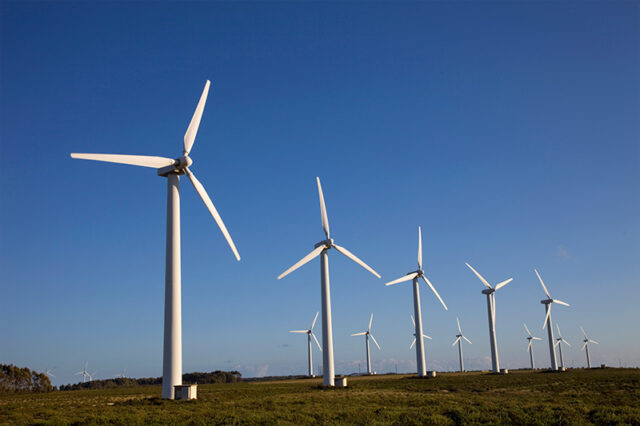A Laois TD has introduced a Bill in the Dáil this week that would “protect householders” in counties where “huge” Wind Turbines are planned.
Independent Republican Brian Stanley called for a Bill that would “regulate wind turbines to provide limits on the exportation of product generated from wind turbines, to protect nearby dwellings from noise and shadow flicker by providing minimum set back distances, to allow access to public consultative processes; and to provide for related matters.”
Deputy Stanley said: “As someone who is in favour of developing wind energy and supports it, I believe we also need regulations on it.
“We need to do it in a practical, sensible and planned way. Wind energy has an important part to play among our renewable energy sources, along with biogas, solar and multiple other sources. They all have to be used.”
The Laois TD said there has been a “failure by the Government” to put regulations in place, “or even to update the 2006 guidelines,” which he said were put in place when wind turbines were “less than one quarter of the height they are now.”
Deputy Stanley said he was introducing the Bill “in an effort to ensure we have a proper planning framework that will protect local communities and at the same time allow for badly needed provision of green and renewable energy.”
Deputy Stanley concluded by saying the Bill “puts some order on an industry in which large corporations have held sway and held all the cards.”
The Bill was not opposed by Government at the first stage. It is comprised of the following 11 sections:
Section 1 sets out the interpretation of the Bill and explains the references made.
Section 2 deals with electricity supply to meet national needs across the entire island of Ireland.
Section 3 states that large wind turbines can only be located in areas designated by County Councillors in County Development Plans.
Section 4 sets out a number of conditions that wind farm developers must meet to ensure there is “effective consultation” with local communities.
Section 5 stipulates that noise from wind farms must not exceed the limits set out by the World Health Organization Guidelines and that shadow flicker from the rotation of the blades must not pass over the windows of nearby dwellings.
Sections 6 and 7 put in place a clear requirement that no wind turbine more than 30m in height shall be located at less than the distance of 7.5 times the height of the turbine from any dwelling and deal with that requirement in good detail. That allows for the development of wind farms.
Section 8 deals with compliance by developers and provides that penalties will be levied on those who do not comply.
Section 9 provides that a sufficient bond has to be lodged with the local authority to repair any damage to local infrastructure such as roads, bridges, buildings, water services, etc. during the period of construction.
Section 10 puts responsibility on wind farm owners to ensure proper decommissioning is done in an environmentally sustainable way. They will need to be decommissioned in 20 to 25 years.
Section 11 provides an opportunity for local communities that live within 4 km of a wind farm to purchase up to a 10% stake in the wind farm, should they wish to do so.



























